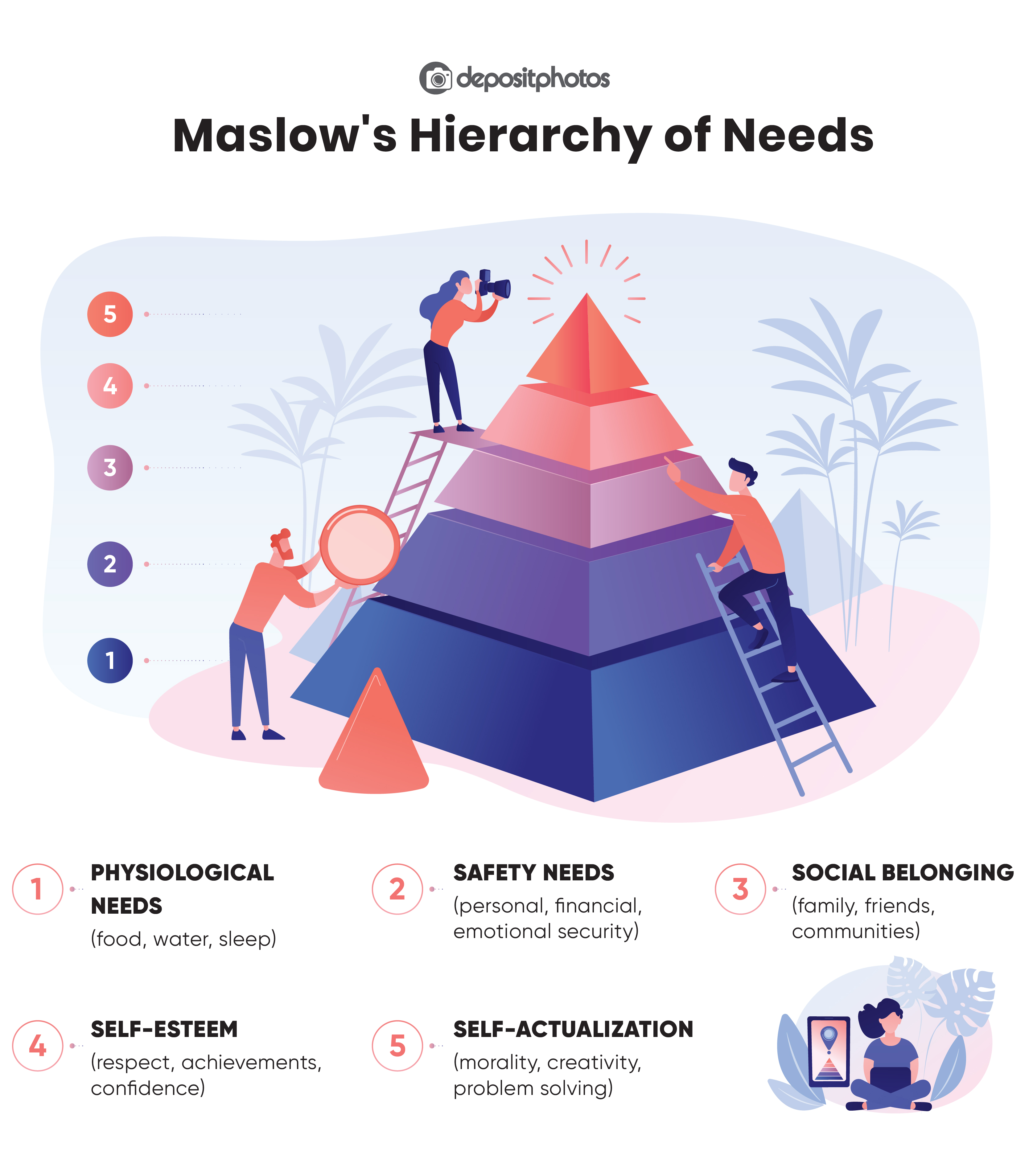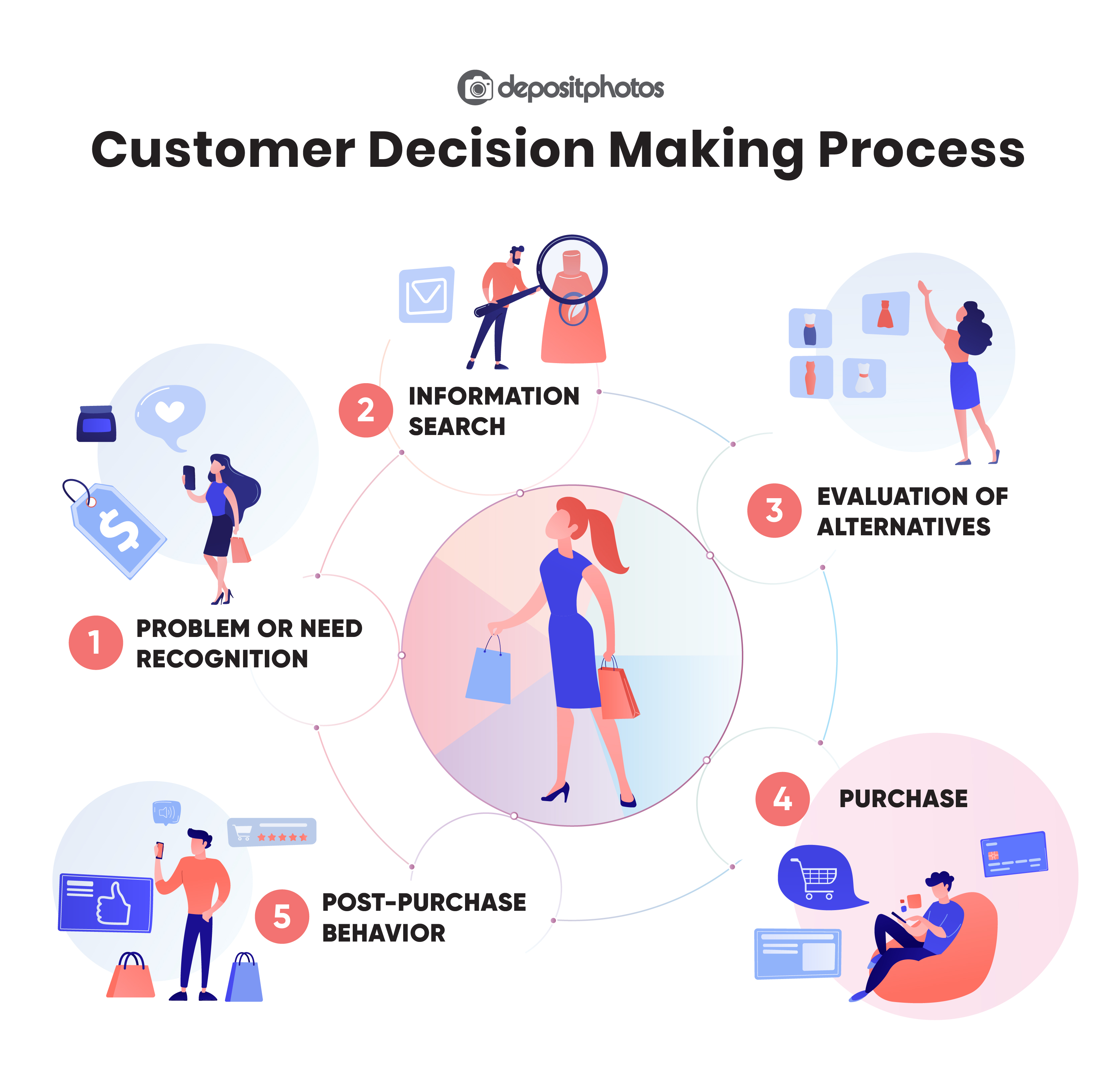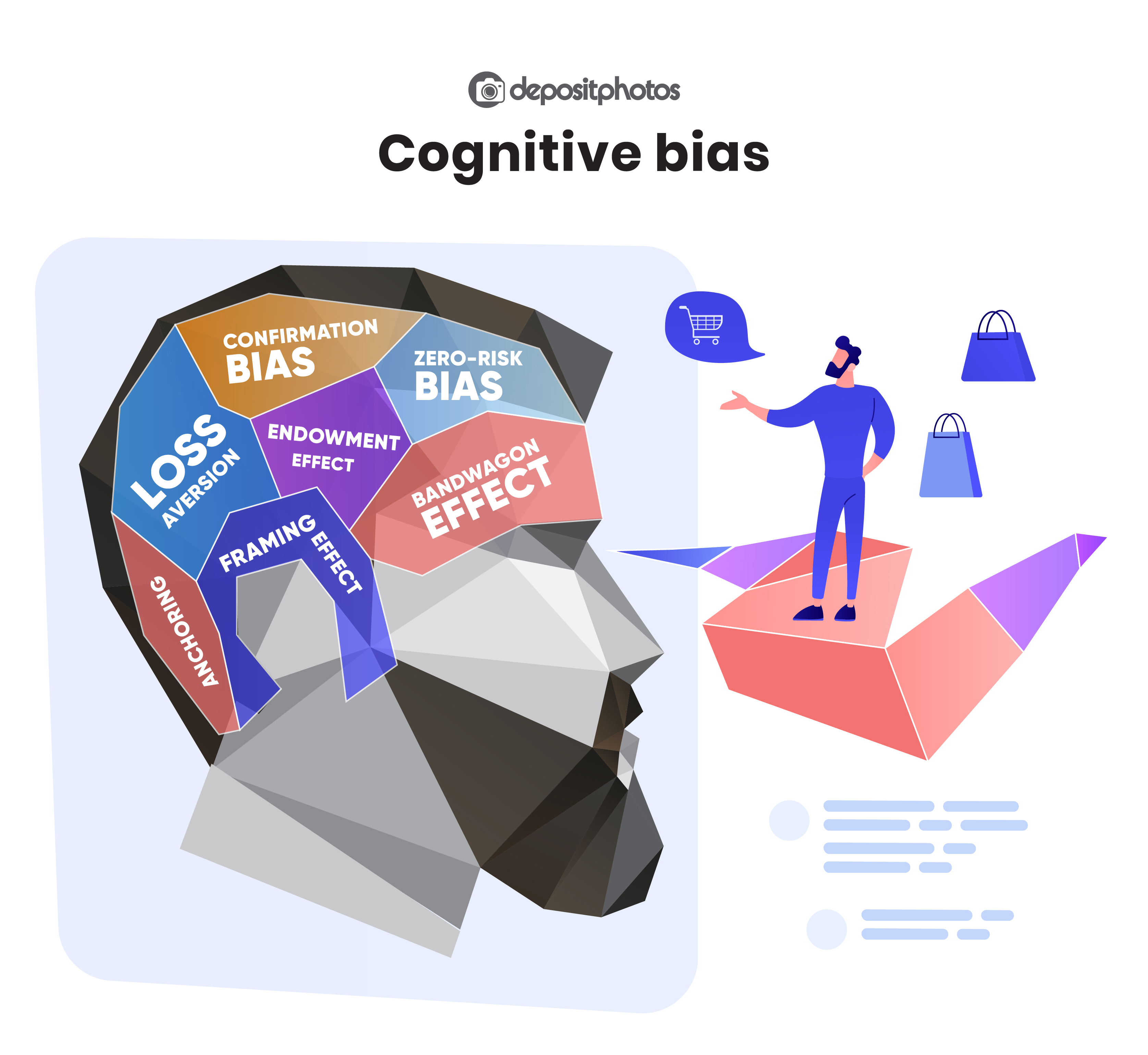Understanding Buyer Psychology and Factors That Influence It
Marketing is a fast-changing discipline that requires flexibility and readiness to quickly implement new tools and techniques. The field drastically changed in the last couple of years, and after the recent events with a world pandemic, it will never be the same. However, there are still some principles that remain relevant whatever the times are, especially when it comes to buyer psychology.
Understanding buyer psychology is extremely important for the overall success of your brand. Buyer psychology and factors that influence it will help you create an emotional connection with your audience based on insights and eventually, drive sales and traffic. What’s even more inspiring, is that you don’t need to have a degree in psychology or economics to sort out the basics. We help you explore all the fundamentals related to buyer psychology in this article.

Maslow’s hierarchy of needs as a basis of buyer psychology
Having learned Maslow’s hierarchy of needs during biology classes at school, hardly have we thought that it might be so applicable to our professional career. However, the model, first described by Abraham Maslow in 1943, is now actively used in marketing, business, and other related fields, as it explains consumer behavior and motivation.
Maslow’s hierarchy of needs is a pyramid with the most basic human needs at the bottom. It identifies five main groups that cover all of our needs. At the core of the theory lies the idea that until people satisfy their needs at the very first stage, they don’t move towards the next one. For marketers, understanding of the pyramid is a chance to appeal to people more effectively by using relevant motivational triggers.
1. Physiological needs
Physiological needs are the first level of Maslow’s pyramid. They are represented by needs common to all living creatures – food, water, and sleep. Until these needs are satisfied, people won’t be able to engage in any other activities. For instance, a person that has not slept at night will have trouble concentrating or paying attention to safety needs that are at the next level of the pyramid.
2. Safety needs
Once the basic needs are satisfied, people can move on to the second stage – safety needs. They include security of different kinds (personal, financial, and emotional), as well as their well-being in general. The simplest examples are that people look for shelter, lock their houses, and turn to insurance companies. When they feel safe and sound, they also feel more stable and think of the needs represented in the third stage of Maslow’s pyramid.
3. Social belonging
This stage of the hierarchy of needs explains the importance of social belonging for people. As many want to feel accepted and meaningful to particular groups, they make friends, families, and join clubs and communities. However, throughout life, especially in childhood, the need for belonging can be of greater importance than other needs for some people.
4. Self-esteem
When people satisfy their need for social belonging, they face a desire to be respected by other individuals. To fulfill the needs at this stage of Maslow’s pyramid, they engage in a profession and develop themselves until their talent and abilities are recognized and appreciated by people important to them. Interestingly, only in the case of successful realization of their potential, people become confident in themselves and move further up the pyramid to the self-actualization level.
5. Self-actualization
The last level of the hierarchy of needs is self-actualization. It implies a desire to further develop as a person by realizing their full potential, as well as fulfilling spiritual needs. At this stage, people usually set more meaningful goals in their lives as they are eager to explore the world and a sense of being. In addition to becoming the best versions of their professional selves, this level may include a desire to be an ideal parent. But, people develop the desires of self-actualization only having mastered the needs at the four previous stages.

As soon as you sort out the basics of the people’s needs and their motivation at every stage of the pyramid, you’ll get a deeper understanding of your audience’s behavior. Keeping this knowledge in mind, let’s clear up the fundamentals of customers’ decision-making process.
Understanding customers’ decision-making process
When it comes to understanding a customer’s decision making, marketers rely on the five-stage process introduced by John Dewey in 1910. According to it, the purchase process begins long before the purchase act, and, at the initial stages, it is based on Maslow’s hierarchy of needs. Although not every customer comes to the last stage of the decision-making process, marketers and professionals working in the related fields should be fully equipped with knowledge and tools for every step.
1. Problem or need recognition
Problem or need recognition is the first and the most crucial stage in the customer’s decision-making, as without it a purchase is impossible. At this stage, it’s worth taking into consideration Maslow’s hierarchy of needs. It can help you understand which needs will be satisfied by customers in the first instance. Marketers are also to define a target audience, as well as the time when this audience might face a need for a product or services. In brief, the problem or need recognition can be triggered by two factors:
- internal stimuli – feelings such as hunger or thirst
- external stimuli refers to influences from outside factors like advertising
2. Information search
When customers have recognized a need or a problem, they move forward to the next decision-making stage – information search. They explore the options available to them.
They might look for internal information in their memory, thinking of past experiences they had with a brand, product, or service. If the answer they find is satisfactory, customers may proceed to the stage called “the evaluation of alternatives”. However, they can also look for external information, in cases, when customers don’t know anything about a particular product or services and want to find out more.
During the second stage of the decision-making process, people gather information from different sources. They talk to their relatives, ask friends, or read reviews. Google or other search engines are very helpful for both brands and their customers. They help products or services to be found by their potential clients and that is exactly why brands should aim to include SEO in their general marketing strategy.
3. Evaluation of alternatives
Having put a couple of brands or services on their list, customers start to evaluate alternatives. As they want to find the one that would perfectly fit their needs, filtering is based on the particular attributes of a product or services.
At this stage, marketers can use photography to influence consumer behavior. According to Crowdriff, 63% of people say that photos are more important than product descriptions, while 53% find visuals more significant than reviews and ratings. Your task at this stage is to provide a consumer as many details as possible. It is also important to engage with your potential clients on social media and endow your brand with a human face to make it more trustworthy and appealing to your audience.
4. Purchase
Once customers decide which brand perfectly fits their needs and brings the most value to them, a purchase might take place. However, it might still be interrupted by some external and sometimes unpredictable factors that may suddenly include finding negative feedback or postponing a purchase because of sickness, for example.
5. Post-purchase behavior
The last stage is post-purchase behavior when customers decide whether they are happy with their choice or not. This stage is decisive, as during this time customers realize if they will buy a product or refer to the services again. For this reason, brands should resort to post-sale communication that will help you engage with your existing clients even more, gather the feedback, and increase chances that they will spread the good word about your company, products, or services.

However, it is not enough to simply understand the decision-making process. Sometimes, customers’ behavior can be absolutely unpredictable or irrational because of bias and other factors that are a part of their psychology.
Briefly about behavioral economics that studies buyer psychology
Behavioral economics studies the influence of diverse factors on human economic behavior and decision making. It challenges the principles of the classic economic theory that state that people act rationally taking into account all possible risks and maximizing their own benefits. The first studies on the topic appeared around the 60’s when Daniel Kahneman along with other scholars explored the details of the decision-making process in the conditions of risk and uncertainty.
It turned out that more often than not, the customers’ decision-making process is irrational. People tend to succumb to emotions and make choices depending on their mood. These findings appeared to be extremely insightful for both theorists and practitioners and in 2002, Daniel Kahneman won a Nobel Prize “for having integrated insights from psychological research into economic science, especially concerning human judgment and decision-making under uncertainty”. Today, behavioral economics is a popular discipline that helps marketers from all over the world predict buyer psychology and achieve their goals in the most effective way.
How cognitive bias influence buyer psychology
As behavioral economics became more and more popular in recent years, dozens of its principles and techniques started to be widely used in marketing. Cognitive bias(errors that prevent people from thinking rationally(, are among them. It turns out that they greatly influence customers’ decision making.
1. Bandwagon effect
To put it simply, sometimes people make certain decisions only because the majority do the same. At this moment, they are guided by the fear of being alone instead of rational thinking. Bandwagon effect can often be observed in fashion, when people blindly follow trends, or in pop culture when people pretend to be fans of a particular movie, music, or movement.
It can also be said that the core of this effect is the need for social belonging. For instance, employees or pupils who want to relate themselves to a certain group of people and eventually, feel accepted to this group may choose to drink from an eco-cup just because their mates do so. However, those who started this movement among the first ones might be guided by their own ecological concerns.
2. Zero-risk bias
According to zero-risk bias, people will choose a brand that offers minimal risk to them. This is due to the fact that having opted for a predictable result, we spend less energy on decision-making, although another result with more risk might be more beneficial to us. People want to feel safe when making decisions in fields such as investments and healthcare.
3. Loss aversion and Endowment effect
Loss aversion is a bias due to which the idea of losing something is much stronger than the pleasure of receiving the same. Scholars say that the emotions we experience during a loss are twice as powerful as those that we have when we gain something. Nots surprisingly, marketers actively use loss aversion bias when they want to drive sales.
Along with loss aversion bias, there’s another one that influences customers’ decision-making – the endowment effect. According to it, people appreciate those things that they already own more than those that they might get in the future. A bright example is a study conducted by Daniel Kahneman and Richard Thaler. A group of people were given cups and offered to sell or exchange them for the alternative of the same value. Scholars also said that people are now the owners of those cups, and what they found out was very insightful. It turned out that once people accepted the ownership of those cups, the amount of money they wanted to trade their goods for was twice as high as at the beginning. What this means in relation to buyer psychology is that many are governed by the psychological rejection of losses, rather than a desire to get the benefit (as it is stated in the classic economic theory).

4. Confirmation bias
The fact that people love to be right is undeniable. Because of their need to be recognized and appreciated by a certain group of people, they tend to seek for answers that would confirm their own point of view. That is what confirmation bias is about. However, it is more complex than it seems at first glance. Confirmation bias impacts people in three ways: biased search for information, biased interpretation of evidence, and biased memory.
1) Biased search for information is when people intentionally seek for news or data that would support their vision. For instance, when you’re procrastinating during quarantine, you surf social media and explore what others do. What you see there is that all the people perform much better than you (which might not be true) and, thus, you confirm your thoughts about being lazy and unproductive. Most likely, you knew that social media would worsen your mood but despite that, you still scrolled the feed as you wanted to come to an already made conclusion.
2) Biased interpretation of evidence is when people subordinate objective information to their own beliefs. If you hate doctors from early childhood, any doctor, even the kindest and professional one, will be regarded by you as unfriendly.
3) Biased memory is when people interpret their memories according to their beliefs. If you are hostile to a person, most of the things that you remember about him will be negative. This is not due to the fact that there’s nothing good about this person but because our brain is subject to the biased memory.
Most often, confirmation bias happens because of the large amount of information we have to process every minute. For the brain, it is much more efficient to subject all memories, knowledge, and news to a particular pattern and thus, quickly optimize all data it receives.
5. Framing effect
The framing effect is another bias that has an impact on people’s decision-making. In short, the same information can lead to different conclusions depending on how or by whom this information is presented. For instance, the price with a discount label will attract more buyers than the same price without it. Perhaps, you’ve noticed that this technique is widely used by marketers for different purposes.
6. Anchoring
Daniel Kahneman has also found out the anchoring bias that challenges the rationality of buyer psychology. According to it, our point of view on a situation depends on previously received information. What’s even more interesting, even information that does not relate to this situation has an effect. Therefore, when companies are to increase prices or release new products, they carefully prepare the audience for future activities, creating anchors using content marketing, for example.
Further reading
In general, buyer psychology is a field that is to be researched further in the following years. It is already full of insights and findings that help marketers and professionals working in related fields communicate with their audiences in the most effective way. This information is also impactful and insightful as we adjust to the ever-changing events taking place around the world.
Buyer psychology is a challenging study as well. It requires marketers and businessmen to pay a lot of attention to details and carefully plan their actions. However, it is also the field that appreciates experiments and encourages you to explore new options with every next campaign you run.
To find out more insightful information on the topic, explore these articles:
1. How to Use Photography to Influence Consumer Behavior
2. Are You Doing Things Better than Your Competitors? Interview with Marketing Expert JP Castlin










